National Systems Protocol Disease Management
March 24, 2021
TRIAL OBJECTIVE
Corn is confronted with several serious disease threats during the season. Managing these diseases with the use of seed and foliar fungicide treatments is essential to maintain yield potential. The objectives of these trials include:
Evaluate the efficacy of seed treatments and foliar fungicides on reducing yield loss due to Fusarium Crown Rot, stalk health issues and other corn diseases.
Communicate the value that native disease tolerance, seed applied solutions, and foliar fungicides bring to disease risk management systems.
RESEARCH SITE DETAILS

UNDERSTANDING THE RESULTS
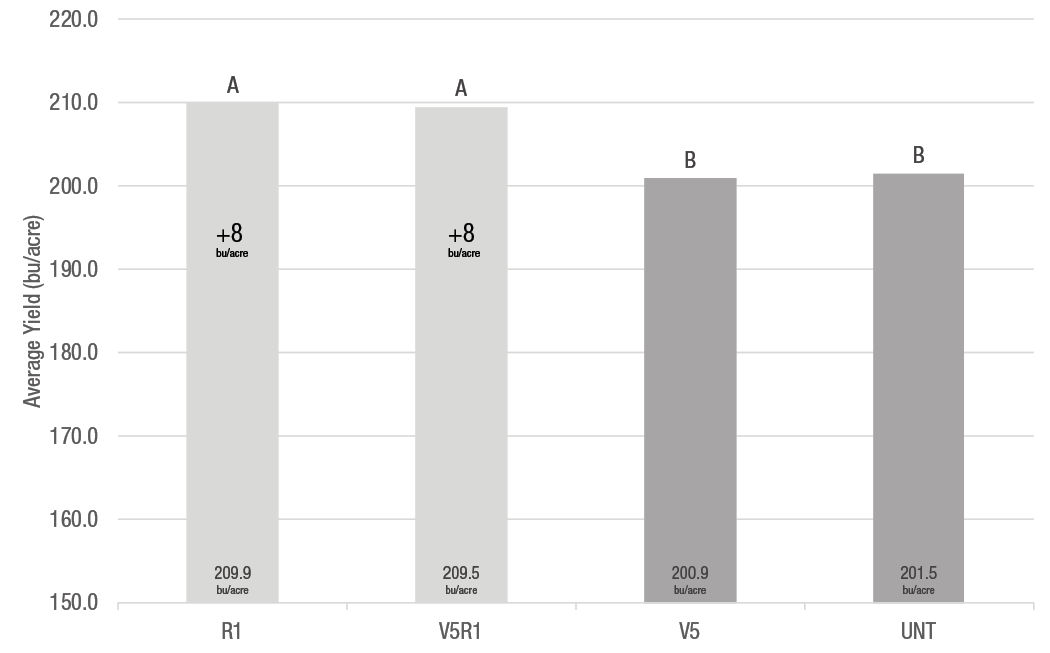
Broad Acre Yield Across Locations
Across all locations, V5 was the only application that does not seem to contribute to yield potential.
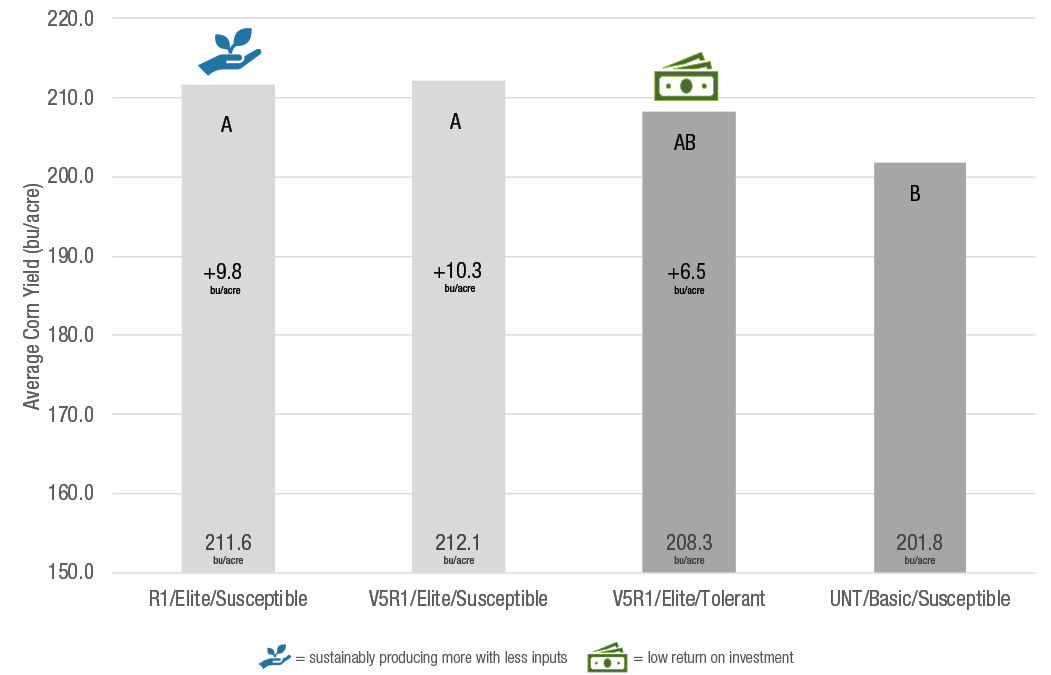
Systems Comparison
- R1/Elite/Susceptible yielded 10 bu/acre better versus Untreated/Basic/Susceptible (Low input system).
Regional Results
Eastern Corn Belt: 4 locations
- R1 only block yielded 8 bu/acre higher than Untreated.
- R1/Elite Susceptible package yielded 21 bu/acre higher than Untreated/Basic Susceptible (Low inputs system).
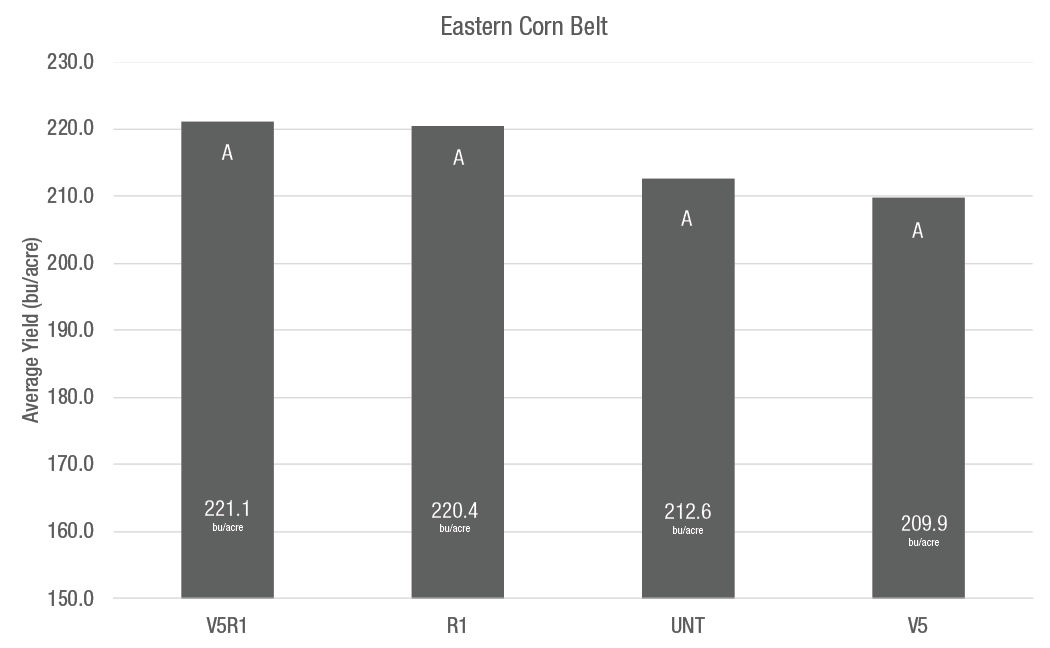
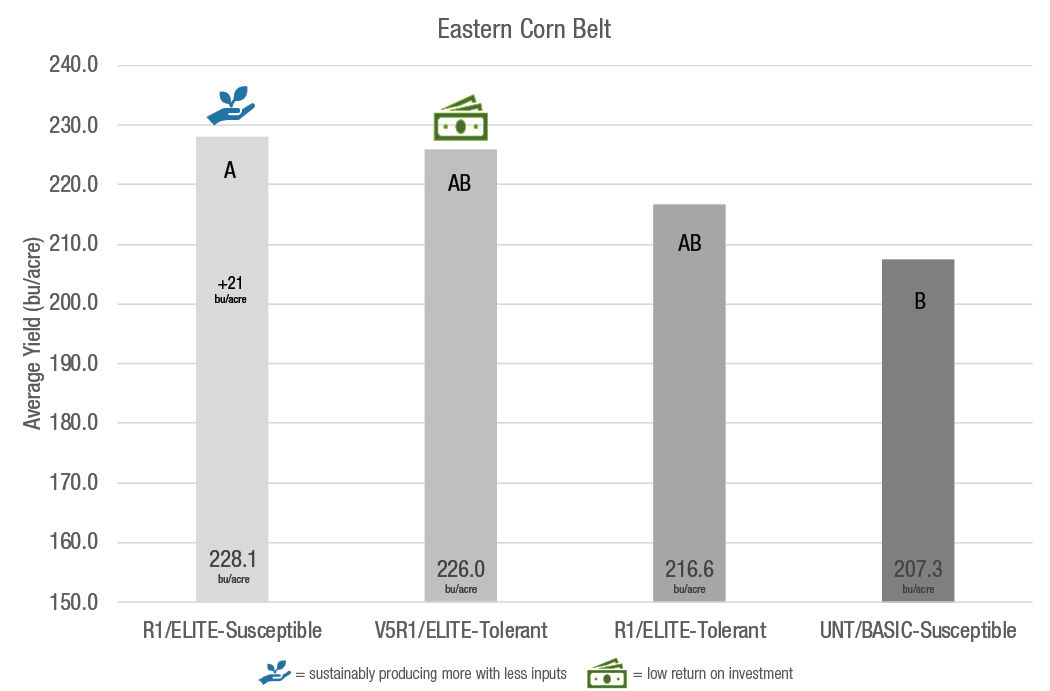
South/East Coast: 5 locations
No significant difference between application timings vs Untreated block but V5R1 application showed 10 bu/acre advantage over Untreated.
V5R1/Elite Tolerant package (High Inputs) yielded 10 bu/acre higher than Untreated /Basic Susceptible (Low inputs system).
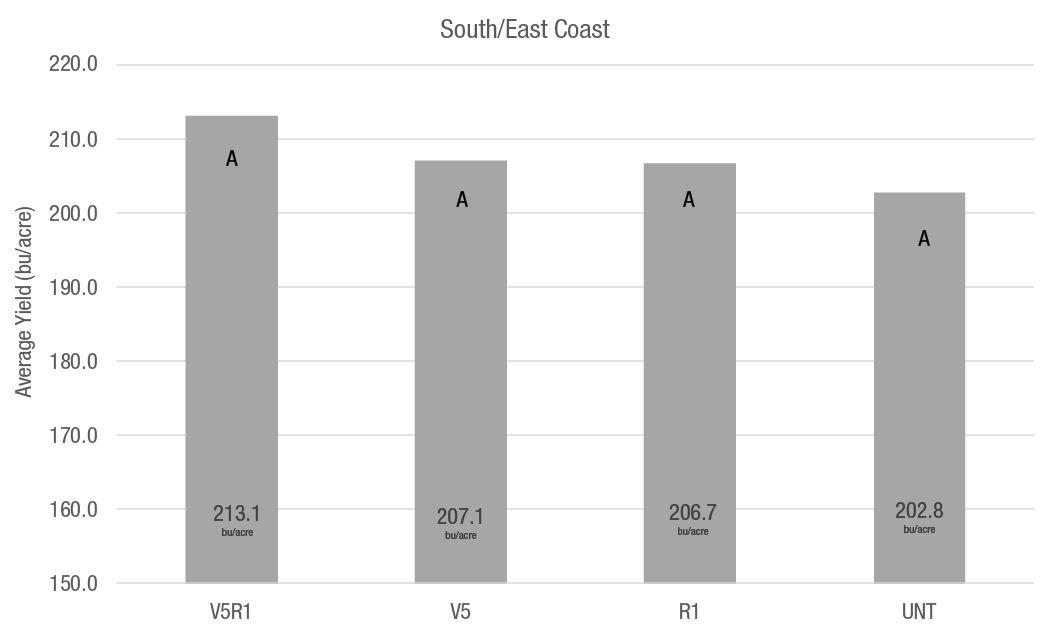
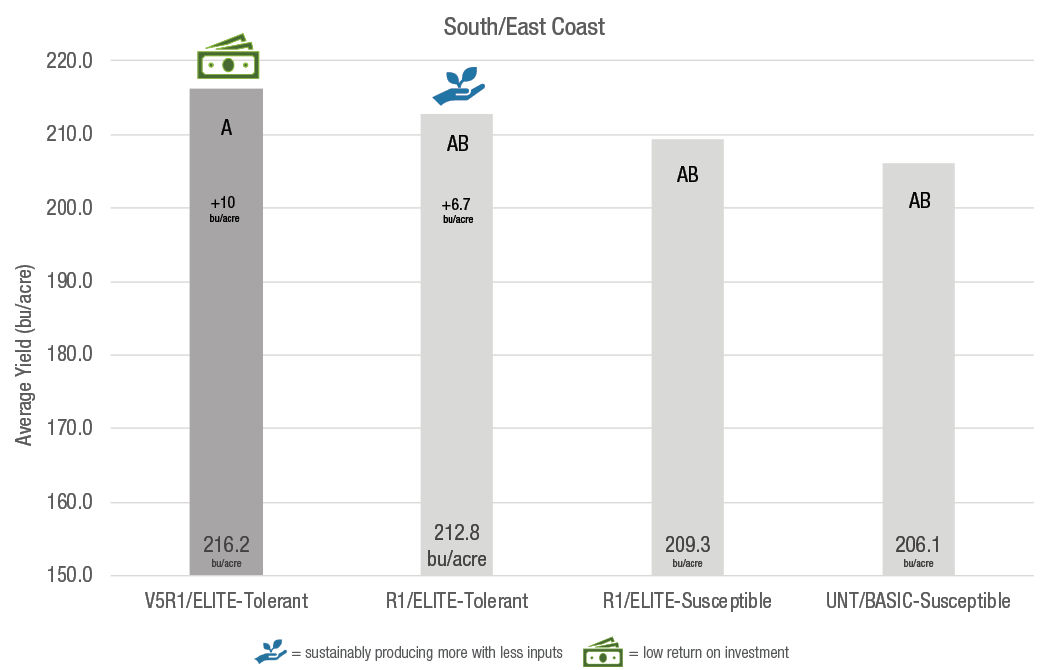
Central Plains: 7 locations
R1 and V5R1 showed significant yield advantage over V5 only block.
R1/Elite Susceptible package yielded 6 bu/acre higher than Untreated/Basic Susceptible (Low inputs system).

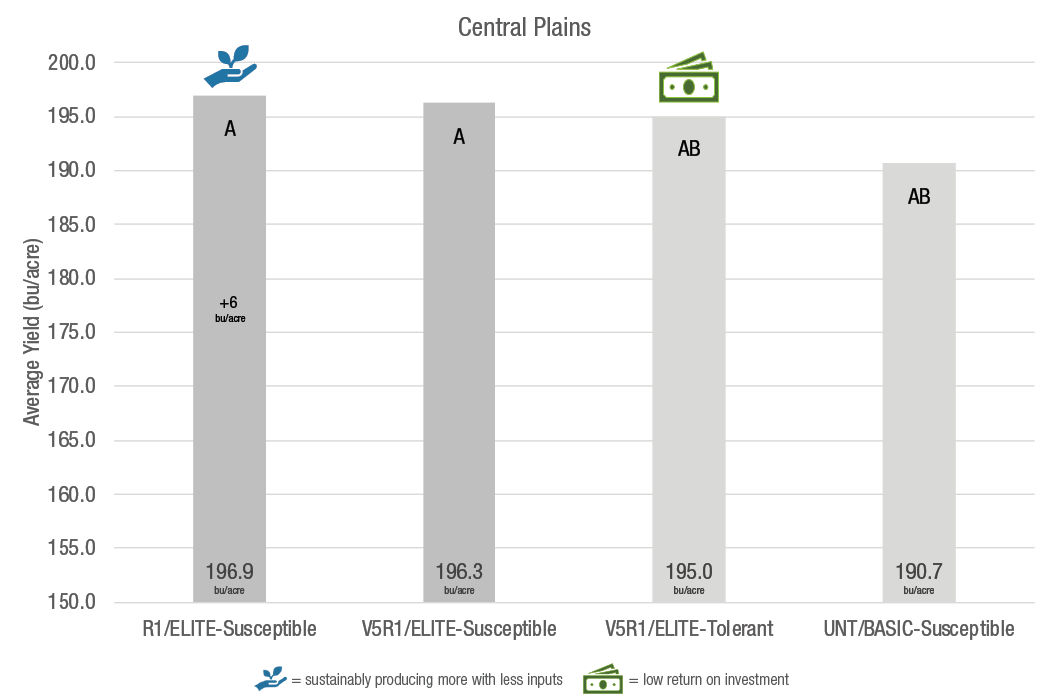
Illinois: 5 locations
₮ R1 only and V5R1 yielded 19-20 bu/acre higher than Untreated block.
₮ R1/Elite Tolerant package yielded 30 bu/acre higher than Untreated/Basic Susceptible (Low inputs system).
₮ Statistically non-significant differences
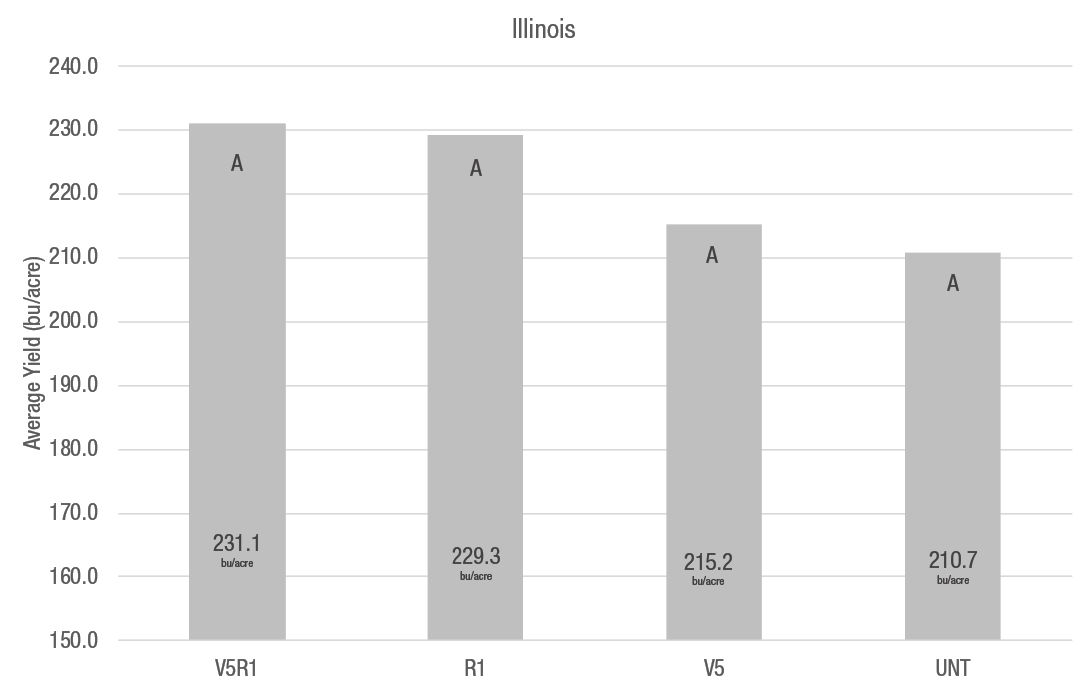
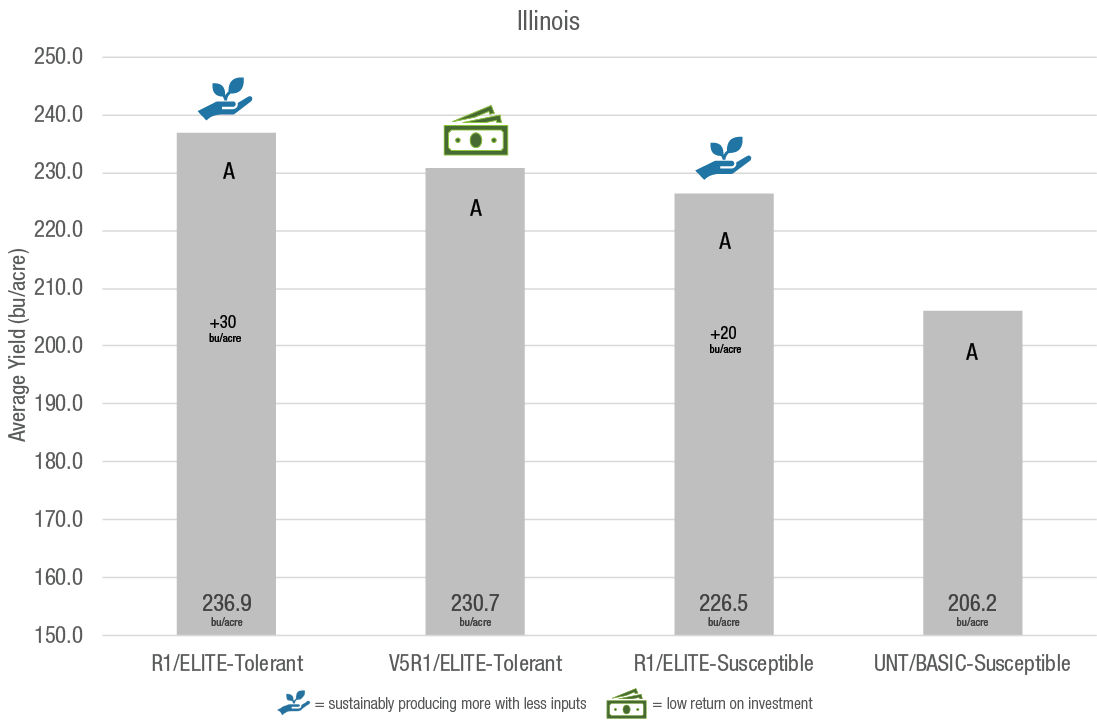
Midwest: 4 locations
₮ R1 only and V5R1 application showed 9-10 bu/acre advantage over Untreated.
₮ Both R1/Elite Susceptible and V5R1/Elite Susceptible packages yielded 17 bu/acre higher than Untreated/Basic Susceptible (Low inputs system).
₮ Statistically non-significant differences
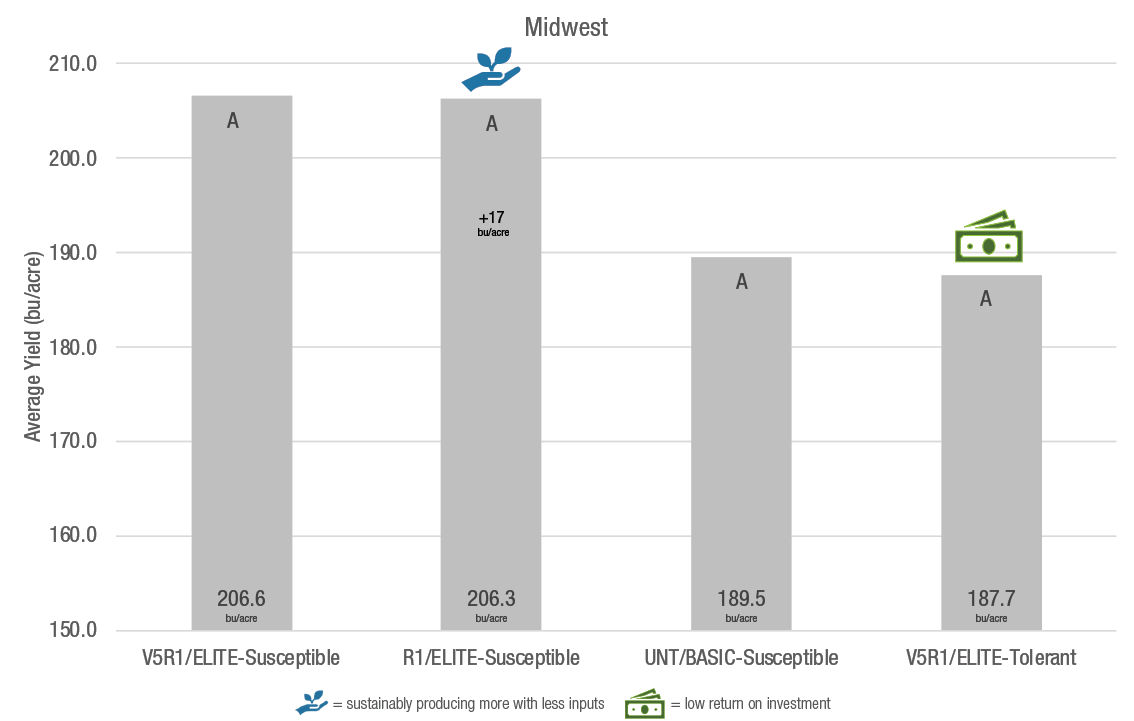

Northern Plains: 3 locations
₮ R1 and V5R1 blocks yielded 4-5 bu/acre better than Untreated.
₮ R1/Elite Tolerant yielded 9 bu/acre higher than Untreated/Basic Susceptible (Low inputs system).
₮ Statistically non-significant differences

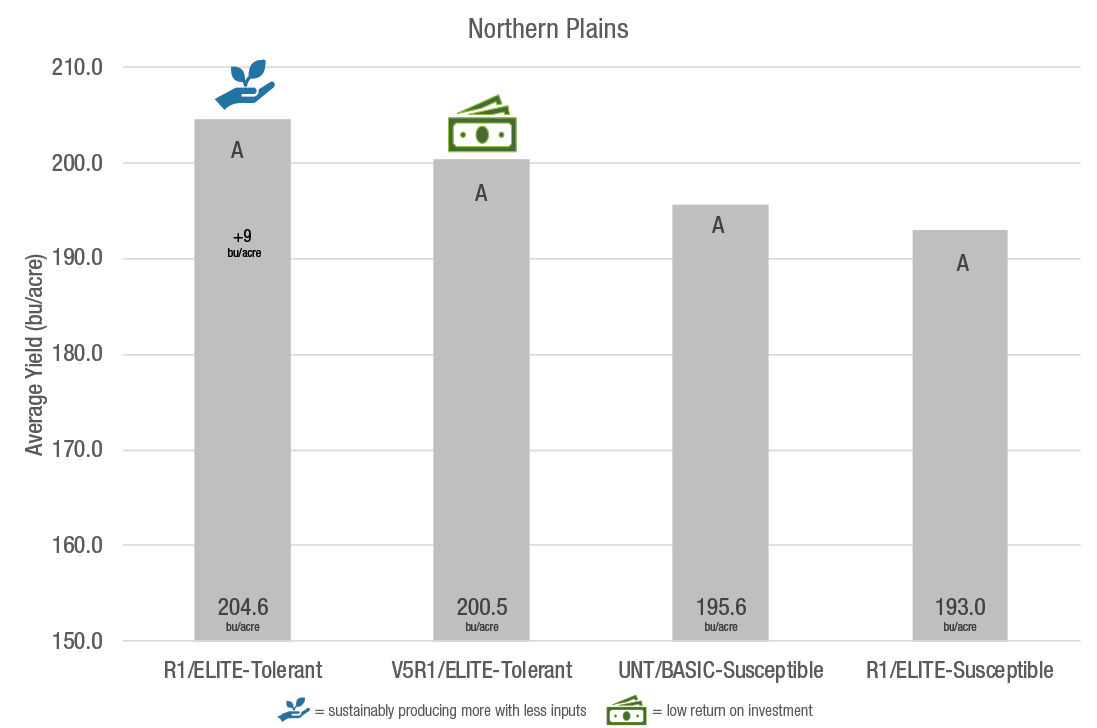
KEY LEARNINGS
In this trial, both R1 and V5R1 blocks had lower foliar disease severity ratings and better staygreen when comparted to the Untreated block.
Corn products with higher susceptibility to foliar and stalk diseases showed better yield response to R1 applications.
Overall, across all locations yield data supports very little to no value from additional V5 applications.
V5 only applications showed mixed results compared to Untreated block with three regions showing 2-5 bu/acre yield increases and four regions showing a 3-7 bu/acre yield decreases. These results suggest that there might be a regional fit for V5 applications.
1010_R2_20
Seed Brands & Traits
Crop Protection
Disclaimer
Always read and follow pesticide label directions, insect resistance management requirements (where applicable), and grain marketing and all other stewardship practices.
©2024 Bayer Group. All rights reserved.